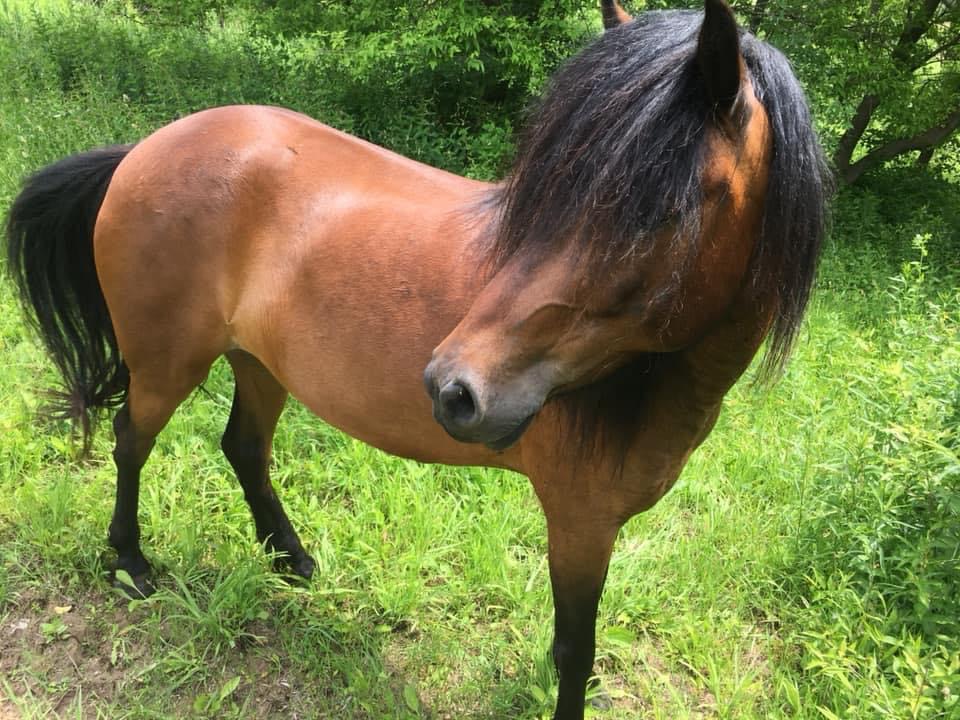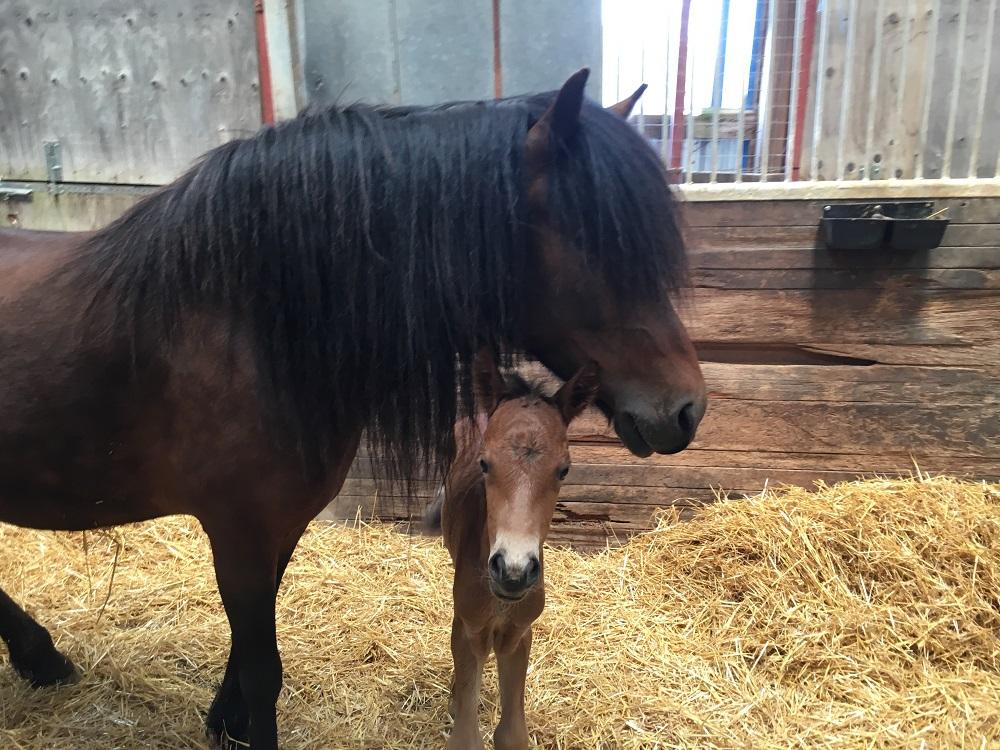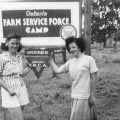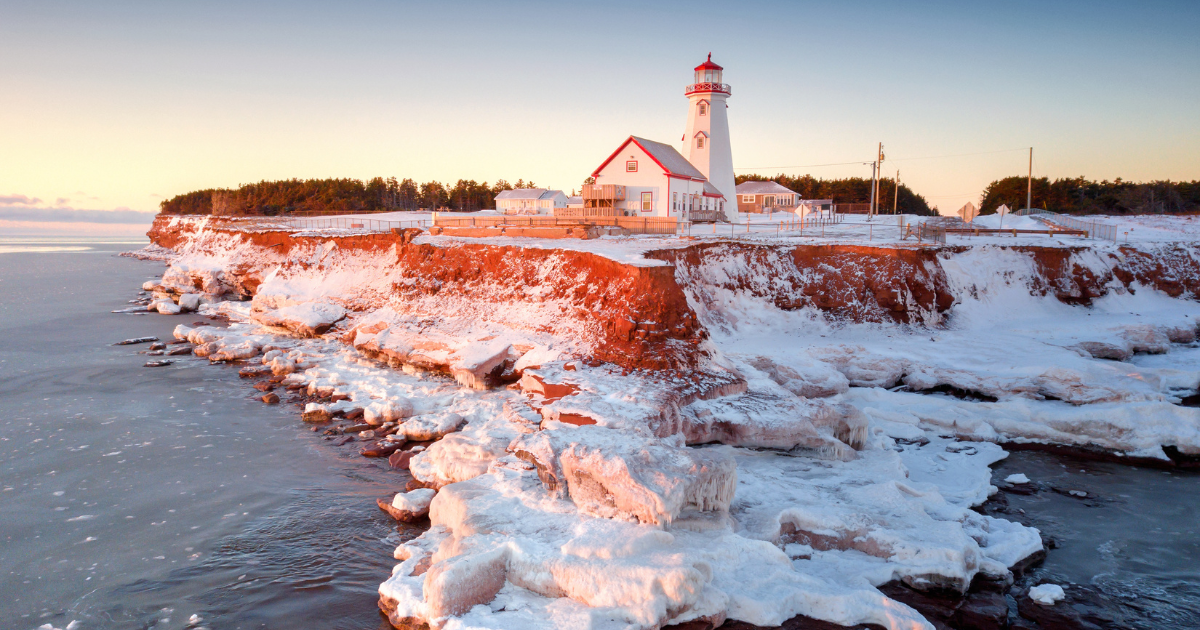As a look at our past reveals, Canadians have a long history of developing livestock and breeds to suit our land and peoples.

Canadian history was built on the surf and turf of our great land and the labour of those working it, from the earliest people to the present day. A humble but vital part of the journey has been the livestock in barns, in fields, from coast to coast to coast. As a country, Canada is recognized for the development of livestock, worldwide, and for its contribution to development, transportation, the food system and the economy. This is true in the present, but it has also been true throughout our history. We have “made in Canada” breeds that we should be proud of! These are unique animals that have important characteristics of value to the specific environments of our vast country.

These animals are a walking history. They have tales to tell! Their stories are steeped in the oral and written histories of the Canadian landscape. Fortunately, through the many efforts of conservationists, historians, enthusiasts and farmers, these animal breeds have been preserved. However, they are still considered rare, some even critically endangered, and need ongoing use and protection to maintain a presence and role in rural Canada.

Canada’s National Horse: The Canadian Horse
In 1665, the Sun King, Louis XIV, sent to New France two stallions and 20 mares from the royal stables. This ship was sent, in 1665, to what is now Old Quebec, containing “les filles du roi” and the king’s horses and men. The king had requested that only the finest horses be sent to the new colony. These were strong, spirited horses, descended from the warhorses that were used by knights in the Norman Conquest. In addition, they had bloodlines, carefully selected for the speed and lightness of the Arab and the Andalusian from Spain. These were no ordinary horses, and they had tremendous value. They were considered a foundational piece of building the colony, along with the king’s maids and workers.

The Canadian horse is often described as the “little iron horse.” From those introductory horses, it has been bred and developed for the needs of our environment and the service of its people, throughout the centuries. Often black in colour (although other colours do exist), it is known for its strength, lightness and speed, particularly at the trot, and it is considered bold and sure. Canadians are very resilient to the cold, with a dense, curly mane and thick, multi-layered coat. They require little feed for their size and energy. They are not big horses, tending to be around 15 hands, but they are sturdy, with strong, hard feet and a strong frame constitution. Since they have much endurance and spirit, they do best with steady work and activity.

The colourful story of the Canadian evolved through the centuries, part and parcel of the historical saga of our country. By 1760, there were 12,000 of these horses in New France. They were used to pull the calèches and carrioles (carriages and cutters) of the habitants, and that was after they had done a full day of farm work. They were considered essential as a transportation tool between Quebec and Montreal, pulling people and supplies on the well-established route. They were even used for newly formed cavalry units. In fact, General Wolfe and Montcalm used these horses on the Plains of Abraham.
It was their success and ability as a cavalry horse that put the breed in peril, over time. The darkest time of the Canadian horse came during the American Civil War period. Thousands of horses had been sent to America by 1849 (estimates were around 150,000 horses), as their value created a profitable industry for Lower Canada. The Civil War had an insatiable need for horses, specifically the Canadian horses; with their hardy and bold characteristics, these horses were considered the perfect mount for northern soldiers. Eventually, the breed numbers went into steep decline, which was made even more desperate by their use in the Boer War and the First World War. The breed only recovered its position, starting in the 1970s, through the valiant efforts of enthusiasts and breeders who resurrected it from a “critically endangered” status.

At present, Canadian horses are a well-established breed with numbers that put it in a much less critical position, although they are still considered “rare.” They are used as carriage horses and riding horses in a variety of sport disciplines. They are also used as workhorses on farms that still use horse power, particularly in some well-known historical villages such as Upper Canada Village (Ontario) and Ross Museum Farm (Nova Scotia). They are also used in the RCMP and city police forces for mounted work. Fortunately, they will never have to return to the work of a warhorse. That part of their history is over.
Indigenous Land: The Bison Herds and the Lac La Croix Pony
Long before the settlers arrived and tried to adapt to the land that was before them, Indigenous populations were making a living on this northern landscape. While hunting and gathering was the mainstay, domestic plant cultivation and agricultural complexes were in existence for 3,000 years before European settlers arrived in North America. Typically, in the plains region, it has been understood that bison meat was only acquired through hunting; however, long before big cattle herds and grain crops dominated the western plains of our country, the Blackfoot people were herding bison into corralled areas, sorting, selecting, providing feed, and generally managing bison for domestic consumption. These activities of herd management provided a meat protein for the population that was reliable and predictable, a big step away from following and chasing bison herds as hunters.

After settlement, the horses and cattle became a significant part of the fabric of Indigenous life, throughout North America. Horses were used in many regions, for transportation, for work, as a source of income and recreation. There is one pony that was developed by the Ojibwa of the Great Lakes Region that later became known as the Lac La Croix pony. The Ojibwa developed a special relationship and reverence for these ponies that lived in their midst, in a semi-feral state. In the summer, these ponies would run wild in the boreal forest. Elders talked of thousands of these ponies running like deer through the forest. These equines have specially adapted nose flaps and very small furred ears, even in summer, that give them protection from the biting insects of this region. Lac La Croix are pony size but have the conformation of a horse, so they are able to move quickly away from predators and cover long distances to forage. Then, during the harsh winter months, the Ojibwa people would give them shelter, food and protection from predators. In return, the ponies would become gentled, and certain individuals would be used for running traplines, hauling wood and pulling sleighs. After winter, they would be released into the wilderness again. It was a symbiotic relationship.
To this day, the Ojibwa people still consider them spirit animals. The La Croix are used to encourage a cultural connection, particularly with certain Indigenous youth programs. Unfortunately, the tale of the La Croix pony is one of a nearly destroyed spirit, at a dark time in our country’s relationship with its land and its First Nations. Like so many other Indigenous tools and symbols of spirituality and connection, we lost the plot of the true story and value of these animals, their land and their people. In the 1930s and ’40s, herds of ponies were rounded up and slaughtered on the advice of missionaries who felt that their feral behaviour and natural mating were not appropriate for Indigenous youth and culture to witness. It was deemed necessary to eliminate, reform and make ”less wild” both the culture of these people and the ponies that were part of their culture. As well, there was public pressure, due to the establishment of public parks and the tightening rules around reservation use, to eliminate the pony as an environmental misfit. A small amount of animals managed to survive the slaughter and the ensuing increase in mechanization.

The Lac La Croix pony barely survived extinction, with only three breeding mares left by the 1970s. There was also one aging stallion and one male colt left (which was shot accidentally by a researcher!) getting protection from a group of Indigenous people in the Lac La Croix region. From those few animals and with the addition of a mustang stallion, the La Croix has slowly been rebuilt. The equine spirit of the boreal forest lives again, although probably never to roam freely in the forests, in a symbiotic relationship with the Ojibwa, as it once did. Today, however, with approximately 150 to 200 individuals spread across conservation areas, ranches and farms, Lac La Croix ponies are a part of people’s lives again.
Canadian Cattle
As with the Canadian horse, the Canadian cow (vache Canadienne) has a long and colourful history dating back to the time of settlement. There are records of cattle in New France from the beginning of the 1600s. Cattle were seen as an important contribution to the economy and food production of the fledgling settlement. Most of these animals were from the Brittany and Normandy regions of France. It is likely that many of the original cattle were destroyed in the Siege of Quebec (1629), but enough survived and more shipments arrived to form a genetic base that was distributed and established throughout the region that is now Quebec.

The established genetic base, with the addition of distribution, isolation and the specific environment, created a breed that is unique to our country. As a breed standard, the cow is described as small to medium size, an excellent user of forage and pasture, producing milk with high butterfat (similar to a Jersey). They typically have a black, brown or russet-coloured coat. While light in frame, they have a hardy constitution and are productive, particularly in butterfat volume, despite lower feed requirements. Currently, they are generally considered a dairy breed, although they were used in settlement times for meat and for work, as oxen.

As an older farmer once told me, “Speckle Park cattle were bred by Canadian Prairie farmers to give them something more interesting to look at through the interminable Prairie winters. It’s boring looking at black or brown cows all day, against the white snow!” However true this statement may be, there is more to the development of the Speckle Park than his description. Speckle Park cattle are a very recent development in Canada, bred in Saskatchewan for the conditions of the Prairie provinces. Breeding began in the 1950s with crosses between the Teeswater Shorthorn and the black Angus (Aberdeen Angus) breeds. Speckle Parks were only granted full breed status in 2006. The breed contains many of the characteristics that are well known in their foundation breeds: substantial size, good muscling, and designed for meat production in the Canadian western environment. As their name suggests, they have speckled markings on a white background along their top line, with more speckling on their shoulders and rumps. Their body is mostly black. They do, in fact, stick out on the Prairie landscape!
Livestock of the Rock
Newfoundland is legendary for its rough, rocky coastline, its fisheries, its resilient people and, above all, the tumultuous ocean that surrounds the island. Did you know, though, that this challenging but beautiful land has produced its own livestock? This is hardly surprising considering the early settlement and the relative isolation of the island. There are written records of sheep on this island going back to the 1500s, and there is some evidence that there may have been sheep on the island even before that time. Due to the isolation, a land race of sheep has developed over the centuries that has a uniform genetic pool. The sheep do not have full breed status yet, but there are ongoing research projects to obtain DNA samples and observe standard breed characteristics. Full breed status could be acquired if the momentum of research and the value of their unique characteristics are promoted.

The Newfoundland sheep have the incredible ability to survive on very little input in terms of feed and management. They are excellent foragers and are able to “make a living” off the meagre and rough pasture found in various parts of the province. Since these sheep are so hardy, some shepherds in Newfoundland take their flocks of sheep out to off-shore islands. Farmers ferry them out to islands such as the Cribbies, with boat or barge. The flocks stay on the islands for the grazing season (from spring to fall), since there is more grass and less risk of predation from predators there. The sheep thrive on these windswept and sea-sprayed grasses. Their lamb is even known to have a particularly rich flavour known as “salt meadow lamb.” Sounds like an interesting life for both shepherd and sheep!
Just as the Newfoundland sheep provided food and fibre for its people, the Newfoundland pony has a special place in the Newfoundlander’s heart as a family companion, as a worker, for transportation and for recreation. If there was ever an all-purpose animal bred for the environment of the land it was born on, it would be the Newfoundland pony! These stocky, furry little equines are typically small in stature (12 to 13 hands), with short ears and small heads and noses. They have evolved for hardiness, for easy keeping on sparse grass. They are known for their sociability and for their willingness to do whatever job is needed around an outport home. Like the Canadians, the breed has origins in the shiploads of ponies that came from the old country, but they were always a workaday animal. Odd jobs — such as pulling wood, assisting with vegetable gardens, taking the family on visits or carrying children as a four-legged stroller — were frequently asked of the pony.

Sadly, starting in the 1970s, free-roaming ponies were not allowed, by law, to forage where they needed to. Most owners did not own enough land to fence for the keep of a pony, so many of these ponies had to be sold. At the same time, with the increasing mechanization and the closing of multiple outports, the population of ponies went into decline. Several were sent to auction and were exported for meat markets. With a severe drop in numbers, the Newfoundland pony was almost driven to extinction. From a high of about 12,000 ponies in the 1940s, there are now about 300 registered ponies. Although a significantly low number, the population has stabilized thanks to the conservation efforts of government, enthusiasts and breeders, within Newfoundland and other provinces.
As American-Canadian lawyer Lesra Martin said, “You can’t shed the past. You can’t shake it. But you can certainly get a new skin! You can grow and become stronger, out of your hardship.” I am almost certain that Martin was not thinking of rare breeds of Canadian livestock while making this statement. Yet, I think the concept is directly applicable to how people and their animals developed in this vast, often harsh, but beautiful land we call Canada. Starting with the Indigenous people and followed by the settlers, we have all lived a symbiotic relationship with our land, the animals and the plants that sustain us. We have been moulded by the forces of our history and the challenges of our environment. The breeds that developed alongside us are our living history. Thankfully, far-sighted individuals gathered and protected these breeds so that they could continue to walk the path of history with their people, in the ever-evolving story of rural communities in Canada.












